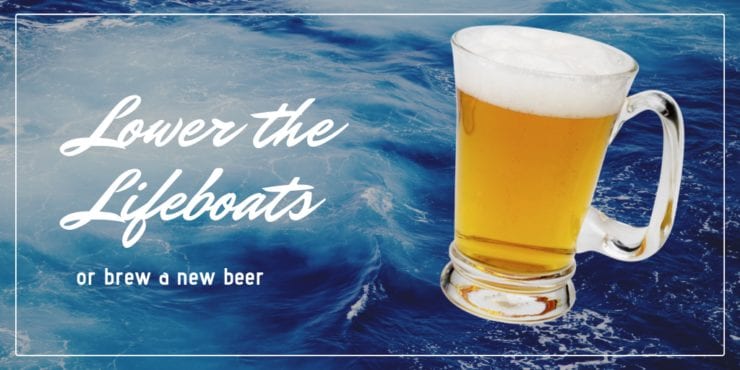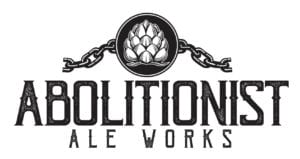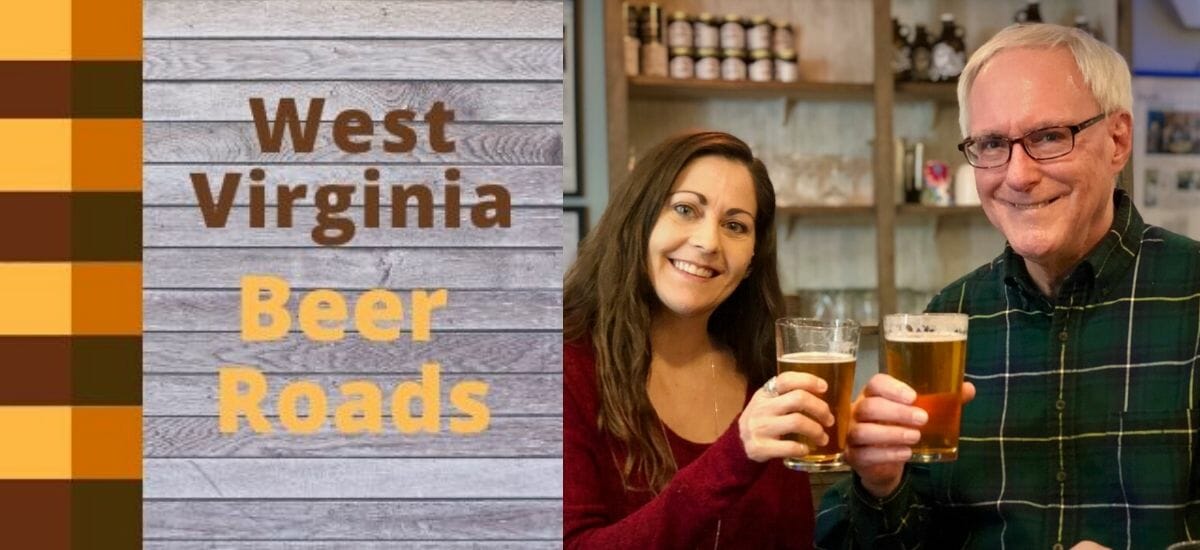
Thoughts on new beers
August 28, 2019
I was reading a recent report on craft beer sales for the first half of 2019 by Bart Watson, economist for the Brewers Association, and it got me to thinking about new beers.

Watson was talking about craft beer sales in the large retail channel, primarily chain grocery/convenience and larger alcohol beverage stores. These stores together account for roughly 60% of overall craft beer sales, so what is happening in them is very meaningful. Watson says the data shows, while overall craft beer sales increased 1.7% during the period, that as a group individual brands over one year old (e.g. “Bells Two Hearted Ale”) lost sales volume. The only reason overall craft beer sales grew: New beers introduced to the market.
What does this tell me? While a brewery can achieve growth by introducing new brands into the marketplace, sustaining that growth for those brands is going to be very tough, even as soon as a brand’s second year. For breweries that have been around for more than a few years, while their flagships may still account for a huge chunk of their sales, their flagships’ market share and sales are declining pretty rapidly (same market, year over year). Breweries that are growing are doing it by introducing new beers or by expanding their distribution into new territories.
You have seen it in the large national and regional craft breweries we get in WV, such as Sierra Nevada, New Belgium, Bell’s, Stone, and Founders. Seems like every week we see them introduce a new brand. And they don’t hang around long either. If you like it, you’d better drink it now. Enjoy it while you can, because it will be gone soon and may never come back.
We are fickle craft beer drinkers

The craft beer drinkers’ incessant search for something new is fundamentally changing the way craft breweries have to operate. Even if a brewer would be happy to just maintain their current sales level, they can’t do it by only continuing to make the same beers they made last year. They are constantly pressed to add something new, and as a corollary, they likely need to retire something old.
Even the fact that smaller local brands are outperforming the regional and national craft labels is little solstice. Our WV brewers may be in a better position to see growth, but they won’t reach their growth potential with only last year’s beers. While the sales data Watson reported does not include on-premise accounts (bars & restaurants) or small brewery taprooms, I can tell you from anecdotal observations here and elsewhere that this phenomena of fickleness is impacting those sales channels too, maybe even more so.
I have to look no further than the rapid proliferation of brands this year at places like Big Timber, Weathered Ground, Abolitionist, Chestnut Brew Works, Bad Shepherd, and Greenbrier Valley to see how seriously this situation is taken in West Virginia.
Ahoy, your flagships are sinking

Even in small, local breweries, the days are over when you could do great business just making five or six core beers. While it may return someday, right now, the brewers who primarily emphasize their standard core beers are asking for a steep business decline.
As Chestnut Brew Works’ Bill Riddenour recently told the crowd at a beer and food pairing dinner in Wheeling: No one cares about your flagships anymore — everyone wants something new. In Chestnut’s first four or five years, most all the sales came from three or four flagships. Sure Riddenour released an occasional seasonal, but that wasn’t where the action or emphasis was. In the past year, however, he has seen all his sales growth generated from his dozen or so new brands, things like Dank Williams III, Misty Mountain, and Berry Me In WV. Even the mega-popular Halleck Pale Ale appears to have peaked. He sees things changing fast and is reacting to the new market realities to keep his brewery relevant in Morgantown, which is the state’s most competitive beer market.
Matt Kwasniewski, president and head brewer at Big Timber Brewing, is also squarely in the new-brand camp. As soon as he got his new brewery online last spring, he immediately began introducing a series of hazy IPAs, kettle sours, Logger Lager, and more new brands. It’s quite telling that he didn’t use the new enlarged brewery capacity to just brew more flagship Big Timber IPA and Porter. He is using it instead to brew larger batches of new lager, seasonals, and new one-offs.
Oh, another IPA? Gulp… gulp… gulp….

Watson reported the six-month sales data shows that IPAs are still king — still the strongest growing style in total volume. No one would probably argue that IPAs are still creating the most buzz and ringing the cash registers at WV breweries. But it’s not last year’s IPAs that people want. It’s new ones.
Big Timber’s introduction of Overcast and Hoarfrost hazy IPAs are a good examples — and I can’t overlook their recent IPA one-offs Giant’s Milk, Lil Brutti, and Spring Board. Bridge Brew Works found success with the introduction of New River IPA, its first new IPA in years. Greenbrier Valley’s slightly reformulated and better-marketed Devil Anse, which kind of made it like a new beer, also has had a good year.
The state’s craft beer bars and growlers fillers can’t seem to get enough of each new IPA release from Stumptown Ales or the double IPAs from Short Story and Weathered Ground. When I stopped at Wheeling Brewing recently they had four IPAs on, out of 11 taps. When Weathered Ground begins canning next month, one of their first two brands to hit cans will be Haggard IPA. Morgantown Brewing’s new owners brought a new ethic to the venerable brewery including releasing 15 new IPAs in the past year. Farmhouse/Sour ale specialist Abolitionist Ale Works even got on the IPA train this year by releasing several different IPA styles in its taproom.
Even the crazy Milkshake IPAs are beginning to catch on in West Virginia. The Peddler did well with Cobalt Blue (blueberry) last fall and Ice Cream Summer (raspberry) just this month. Bad Shepherd scored with its Dashcam Famous, Princess Peach, and Mayoral Shakeup milkshakes. Add Morgantown Brewing to those who have seen their new Milkshake IPAs fly out of the taps. Not to be left behind, Chestnut Brew Works says it’s putting one out soon.
I like mine fruited, please

The lighter ABV craft beer style creating the most excitement at breweries across the nation has probably been the kettle sours. That would be Gose and Berliner Weisse. Among kettle sours, we have to talk about the exploding growth of the fruited versions.
Not everyone is into making kettle sours because they increase the risk of contaminating your other beers with the souring agent lactobacillus. But those who do take the plunge, and do it well, are currently reaping a big reward.
I have to give a nod to Bridge Brew Works, which made the first widely popular Gose in the state with its Iapetus Gose. They followed the regular one with a couple of flavored versions, and they just released a new batch of Iapetus this summer. Parkersburg Brewing pioneered the style with its Bushwa Berliner Weisse, which sold well, even at a pretty high keg price. This summer, Parkersburg’s followup release of Spa Daze Raspberry Berliner gave the brewery a very big sales boost. The folks at at Morgantown Brewing say their recent experience with fruited kettle sours has been crazy positive. They are typically the hottest tap on University Avenue. They plan to make more of them in the coming months.
Big Timber’s new fruited sour series, which began with Alpenglow (native cranberry/orange) and continued with Key Lime Pie and River Cruiser (cucumber-dragonfruit) has been dynamite, blowing out of the brewery. Look for more of these to come soon. Berkeley Springs Brewing’s brand new No Lie Sour Cherry Gose is excellent and one to look for. This summer, The Peddler hit the target with its Piccadilly Sour (peach) and Short Story gave the style a try with its Fun With Prisms kettle sour in both mango and cherry/tangerine fruited versions.
The sales success of the above beers will surely lead to us seeing more fruited kettle sours at our local breweries in the coming year.
Craft Lagers growing here too
It’s interesting that while craft beer drinkers are seeking out the very flavorful IPAs and fruited kettle sours, they are also finding new appreciation for beers with cleaner lighter flavors, like pale lagers, cream ale, and Kölsch. Watson’s report showed this is a national phenomena.
This rise of craft pale lagers is being seen at West Virginia breweries too. The popularity of Weathered Ground’s Cool Ridge Lager and its companion, this summer’s Cooler Than Cool Ridge, is telling. These beers have consistently been the biggest sellers at their taproom. Big Timber got into lager in a giant way this year when it began producing large quantities of Logger Lager and put it in cans for distribution. Then, they followed up this month with a big batch of canned Oktoberfest lager. While Long Point Lager had done well in the past, Bridge Brew Works decided to update and boost their lager line-up by adding the new Pillow Rock Pilsner. Short Story has been getting great reviews on its Argonaut and Lamplight lagers.
In the past year, Greenbrier Valley came out with a new pilsener-style lager (Ole Ran’l) and an excellent reformulated Kölsch. Chestnut Brew Works put out a summer lager for the first time. Places like The Peddler in Huntington, Short Story in Rivesville, and Brew Keepers in Wheeling released Mexican-style lagers for this summer, and the beers were among their hottest sellers.
Keepin’ it new is keeping’ it real
Brewers today who want to grow, even small West Virginia brewers, must be more conscious than ever of what’s new and what’s selling among the wide variety of possible beer styles. Today, there are almost no rules at breweries. If you can dream it, you can make it. What you can’t have success with any longer is just a plain blonde, an amber, a pale ale, and a stout. Those days are gone, even in the dark hollers of West Virginia.
Today’s market requires a brewer to be more nimble, more flexible, and more adept. Running a successful brewing business is not getting easier; it’s getting harder.
And the winner is…
Some of our small WV breweries have released an amazing number of new beers over the past year. How many is great, and how many is too many? I don’t know. I guess that’s for you to decide.
Brilliant Stream’s “Just Throw Stuff Up on the Wall and See What Sticks Award” goes to Abolitionist Ale Works in Charles Town and Bad Shepherd Beer Company in Charleston.

Abolitionist released over 70 new beers and new versions of beers in the past 12 months. That’s over one per week. I know Abolitionist brewer Mike Vance is pure mad scientist when it comes to his art. He often creates things no one else even tries. When it works out, they are true masterpieces. And while most of his brews are the more exotic farmhouse ales and barrel-fermented sours, he even broke down this year and brewed a handful of new IPAs. His talent is versatile. Since his beers are only sold in their taproom, it’s a shame more West Virginians don’t get to try his stuff.

Bad Shepherd Beer Company released around 60 different new beers at its Charleston brewpub in the past 12 months. About 18 of those were IPAs. And then, they also brewed a dozen or more regular beers that they keep bringing back (things like the Loud and Cloud Machine IPAs). Sometimes their tap list may seem like an ant hill fire drill, but brewer Ross Williams does hit the target pretty often. He certainly keeps it interesting. It’s a great place to explore new tastes. Their book may have the widest style range of any brewery in the state.

Runner up for this award goes to Weathered Ground Brewery, which introduced about 45 new beers at its brewpub in the past 12 months. Brewer Sam Fonda seems to be an explorer by nature or he may just have a short attention span. But whatever the case, he loves to make new beers. Fortunately, his batting average is pretty good, with more home runs than strike outs.
If any other brewers out there want help understanding how to brew using a shotgun rather than a rifle, they should talk with Mike, Ross and Sam. All of these guys have the brewing disposition that seems well suited to the fickle, short-attention span world of today’s craft beer drinker.

